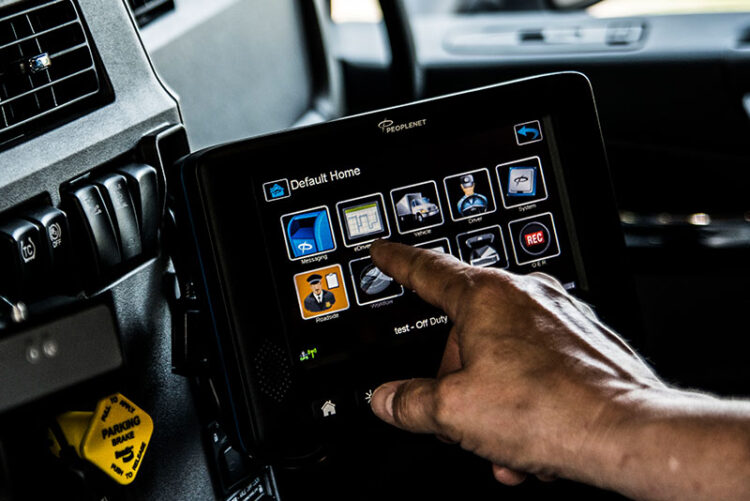One of the biggest misconceptions about electronic logging devices (ELD) is that they can benefit only the trucking companies, not the drivers themselves. While it is true that ELDs help keeps drivers honest, they can also benefit from them,. You can check out Latest News about ELD Mandate bestelddevices.com. It is no wonder that drivers who actually had an ELD in their truck are rarely if ever, choosing to go back. Almost all complaints come from drivers who don’t have any ELD experience and their opinion is based on hearsay. This is the case with almost all new technology. There is always some opposition to the introduction of new ways.
Trucker companies CEOs stress out that ELD can greatly help them when dealing with impatient clients.

“We’re able to use the information to create value and drive the value statement with our clients,” says David Carruth, CEO of ONE for Freight, a Canadian trucking company. “The client understands we have a regular shipper that ships out of Concord [Canada]. They’re consistently late. Freight isn’t ready until six, seven, eight o’clock at night, and the expectation is that it’s delivered in Bristol, NH, before noon the next day,” he said. “Well, if you’re running an electronic logging device, you can’t do that, right? It’s just not a safe practice. It’s really helped to show our clients, ‘Look, I understand it’s only 680 miles, but you can’t just run all out to get there.’”
Reduced Paperwork

Entering data in a paper logbook is probably among the least favorite aspect of a truckdriver’s day. Not only it is burdensome, but it is also costly, both in terms of time and money. According to the FMCSA’s Regulatory Impact Analysis for ELDs, annual savings on average are more than $700. They include drivers filling and submitting RODS, as well as a clerk in the company doing the same. On average, a trucker fills 240 RODS a year. With an estimated saving of 4.5 minutes per RODS, it amounts to 19 hours per year. Add in the cost of the logbooks themselves and it is easy to see that ELDs will pay for themselves in the first year.
Easier Scheduling
One issue both drivers and companies shared was the inability to plan for drivers’ mandated downtime and when their hours of service (HOS) ended. With an ELD on board, that is an easy task. David Carruth equipped his entire fleet with ELDs in 2015 and has never looked back. “One of the stresses we found with paper logs is that drivers really never knew when their day was going to end,” he says. “By moving over to electronic logs, they know exactly when their day must end and allow us to plan around that accordingly. It holds everyone else in the company accountable to the driver’s time and puts them all on a level playing field, including the dispatcher and the technician.”
Increased Driving Time

ELDs can add another 5 or even 10 hours of drive time each week by simply avoiding rounding that is mandatory in paper logbooks, according to Mike Ham, vice president, and general manager of Omnitracs Canada. “When you look at the paper exercise today, everything rounds up to 15 minutes, when actually some of those events may be just five, six or seven minutes in length, “ he says. While not all of that time will be drive time, Ham estimates that a driver can add at least 100 miles a week by precisely noting these short events. “That is good for the company and good for the driver,” he added. He noted motor carriers that don’t automate the HOS data collection process “have somebody trying to do audits … and they can only audit a fraction of the fleet whereas when you go to ELDs, push a button and everybody’s got the information at all different levels, and it’s all auditable. So there’s the return on investment all around ELDs.”
Increased Availability
One of the most precious commodities in the modern trucking world is drivers’ availability. With mandatory downtime and limited hours of drive time, drivers often end up stranded, unable by the law to continue. They can only drive for 11 hours and that has to be completed in a 14-hour window. After that, they have mandated 10 hours of downtime. This is where ELDs can step in and increase their availability, according to Tony Lourakis, CEO of BigRoad-A Fleet Complete Company. “Maybe a driver only has enough hours left in a day to pick up a load before he or she needs to shut down,” he says. “But by looking at their seven-day cycle of available hours, they can actually move that freight coast-to-coast over a three-day period. That’s when it becomes winning a $10,000 job due to available hours vs. a $2,000 job.”
“Every hour you run empty or sit at a dock waiting is an hour spent burning cash,” Lourakis added. “The trick is to maximize the hours you are under load, and the only way to do that is with data collected electronically.”
ELDs Make for a safer drive

Drivers who have an ELD on board have had 11.7% fewer crashes and 5.1% fewer predictable crashes. One of the reasons for this is that with ELDs, drivers don’t have to spend any time talking to the home office, explaining to a dispatcher how many hours they have left to drive. The calls can be a distraction and often led to accidents when the driver’s attention is not on the road, but rather on the phone call. This is an obvious benefit from a safety standpoint, but there are other benefits as well. Truckers with fewer accidents have cleaner CVs, making finding future employment that much easier. ELDs helping with route planning means that drivers will have an almost impeccable history of job performance, which will be well-documented. This can help only with future employers, but a current one as well. The history of jobs finished in time often results in increased pay and bonuses.
 Hi Boox Popular Magazine 2024
Hi Boox Popular Magazine 2024



